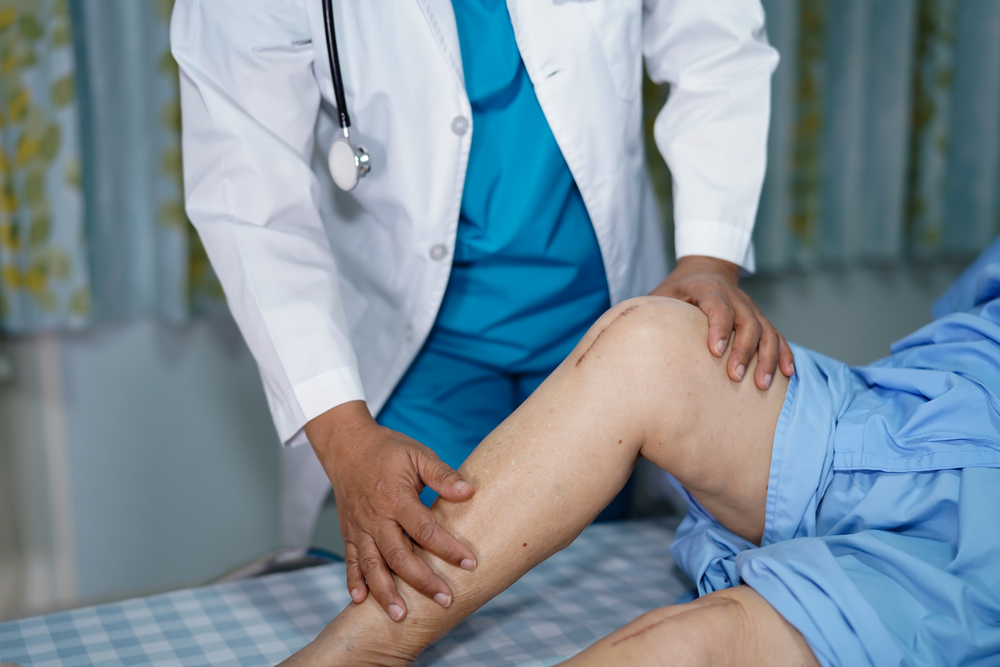Arthroplasty is a surgical procedure that your Phoenix orthopedic surgeons perform to restore function to a joint that has been affected by trauma or disease. In essence, arthroplasty involves the repair or replacement of a damaged joint with an artificial one, often referred to as a prosthesis. At Mattalino Orthopaedic in Phoenix, AZ, we get lots of questions about this and other procedures and would like to help you understand more about this effective treatment.
From Your Phoenix Orthopedic Surgeons: What Is Arthroplasty?
Arthroplasty is the surgical rebuilding of a joint. This may involve the complete replacement of the joint with an artificial implant, known as a prosthesis, or more targeted repairs that still preserve much of your joint’s natural anatomy. The specific surgical approach we take is determined by the severity of joint damage and the impact on your life.
The Specifics of Joint Replacement
In total joint replacement, which is a common form of arthroplasty, the entire joint is removed and replaced with high-grade plastics, metals, or ceramic materials that replicate the movement of a normal, healthy joint. For instance, in a total hip replacement, we replace the damaged ball (the head of the femur) and socket (the acetabulum of the pelvis) with prosthetic components. The materials used are designed to be accepted by your body and resist wear over time.
Partial joint replacement, another form of arthroplasty, involves only replacing the damaged parts of the joint. It’s often used for knees and hips when only one compartment of the joint is affected. This approach can preserve more of the joint’s natural tissues, which can be beneficial in terms of maintaining more natural joint function.
Joint Resurfacing
In cases where the joint damage is not extensive enough to require a full replacement, we may perform a procedure known as resurfacing. This involves shaving down and capping the ends of the bones that form the joint with a smooth metal surface. It’s less invasive and can be an option for younger patients or those with less severe joint damage.
The Rationale Behind Arthroplasty
We consider this treatment when the joint damage is severe enough that it impairs your quality of life and when other less invasive treatments, such as medications or physical therapy, have failed to provide relief. Chronic pain, joint stiffness, and a significant reduction in the ability to perform everyday activities are indicators that arthroplasty may be beneficial.
Prior to surgery, a comprehensive preoperative assessment is crucial. This involves a detailed discussion about your medical history, physical examinations, and advanced imaging techniques such as X-rays, CT scans, or MRIs. These investigations help us to visualize the extent of joint damage, which is critical in determining the most appropriate type of arthroplasty.
We also assess your overall health to ensure that you’re fit for surgery. This includes evaluating your cardiovascular health, reviewing any medications you’re currently taking, and discussing potential risks associated with the procedure.
The Arthroplasty Procedure Explained
During the arthroplasty procedure, you will be under anesthesia for your comfort and safety. We begin by making an incision to expose the joint in question. We then proceed to remove the damaged or diseased parts of the joint. For a total replacement, we prepare the bone surfaces to fit the prosthetic components precisely. These are then secured in place, often with the use of a special bone cement or other fixation methods that encourage bone growth into the prosthesis.
Once the new joint components are in place, we ensure that they align correctly and that the movement is smooth and natural. The incision is then closed with sutures or staples. The entire process is carried out with the utmost precision and care to ensure the best possible outcome for you.
Postoperative Considerations
After surgery, you will be moved to a recovery area where we monitor your vital signs and begin pain management. Controlling pain is essential for your comfort and to facilitate early movement and physical therapy, which are critical components of the recovery process.
In the initial days following arthroplasty, you will begin a rehabilitation program under the guidance of physical therapists. This program is tailored to your specific surgery and needs, with the aim of strengthening the muscles around your new joint and improving your range of motion. Rehabilitation is an ongoing process that will continue after you leave the hospital.
Recovery and Rehabilitation
Recovery times can vary, but the commitment to rehabilitation is constant. The first few weeks post-surgery are critical for healing, and during this period, we focus on managing your pain, preventing complications, and starting you on physical therapy.
Physical therapy initially focuses on gentle exercises that promote blood flow to aid in healing, prevent clots, and begin the process of regaining mobility. Over time, the intensity and range of exercises will increase, tailored to your progress and specific needs. It is imperative that you adhere to the rehabilitation plan and maintain regular communication with us to ensure the best recovery outcome.
Long-Term Care of Your New Joint
Caring for your new joint is crucial for its longevity. We’ll provide you with specific guidelines that include maintaining a healthy weight, avoiding high-impact activities that may cause undue stress on your new joint, and engaging in regular, joint-friendly exercises such as swimming or cycling.
It’s also important to be aware of signs that might indicate a problem with your new joint, such as persistent pain, swelling, or instability. If you notice any of these symptoms, it is important to contact us immediately.
Follow-Up and Monitoring
Regular follow-up appointments are a key component of your post-arthroplasty care. During these visits, we assess the function of your joint replacement, monitor for any signs of wear or complications, and address any concerns you may have. These appointments are typically more frequent during the first year after surgery and may become less frequent over time, but they are essential throughout the life of your joint replacement.
Learn More From Arthroplasty Specialists in Phoenix, AZ
Arthroplasty is a life-altering procedure that can offer significant pain relief and improved function for those suffering from severe joint damage. As your orthopedic surgeons, we are here to support you every step of the way on your journey to a more mobile and pain-free life. Schedule a consultation with us at Mattalino Orthopaedic in Phoenix, AZ today to learn more.


